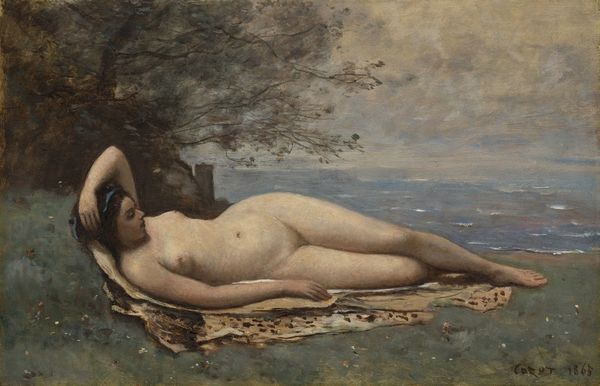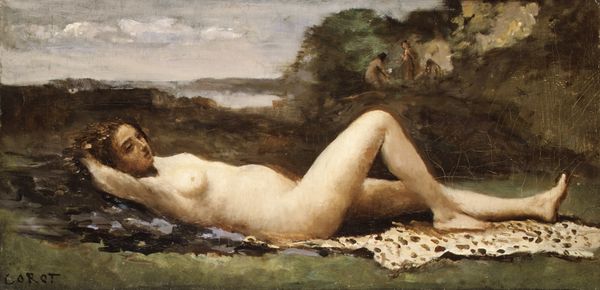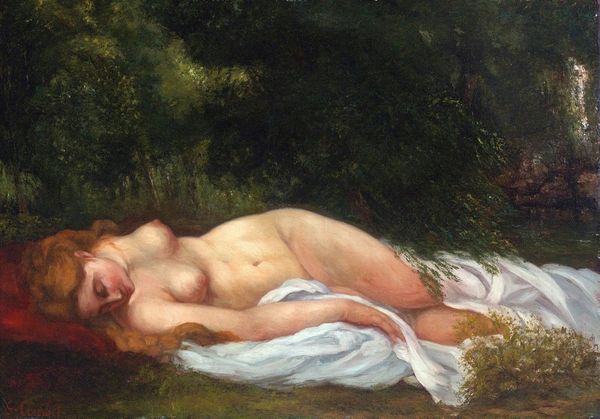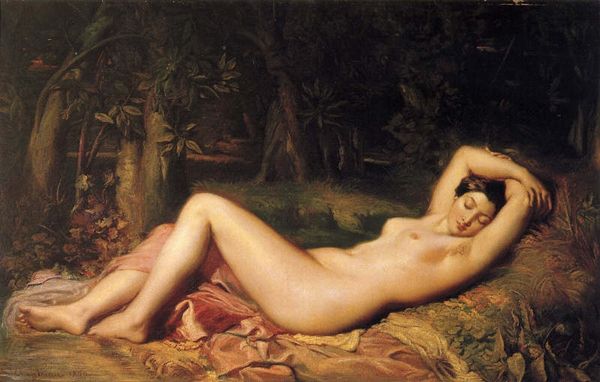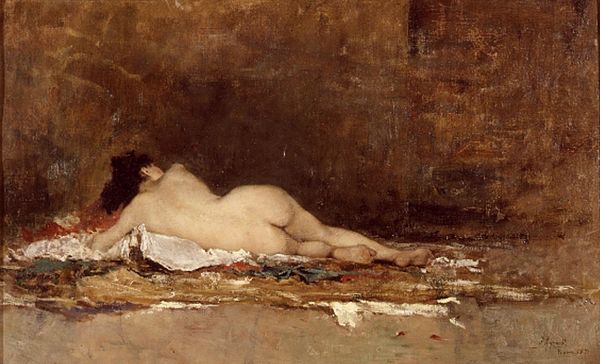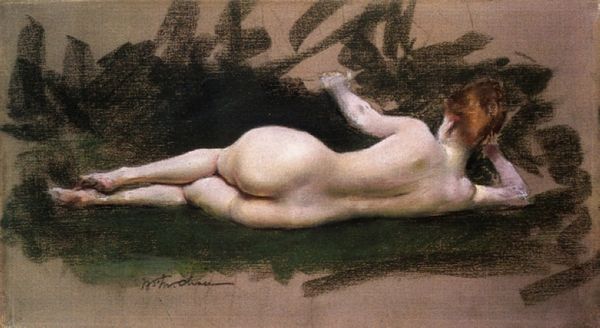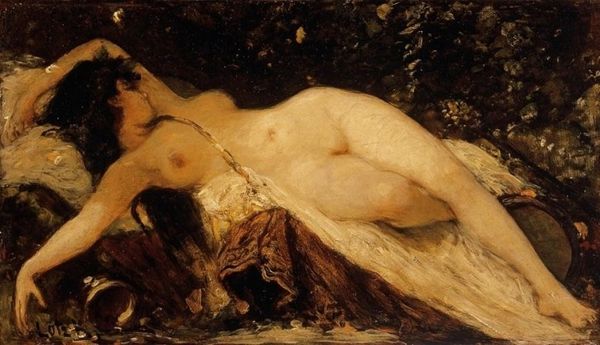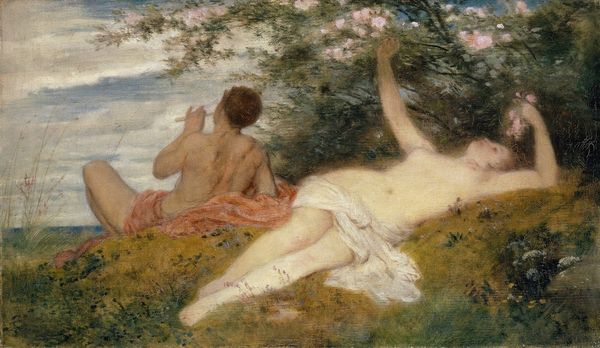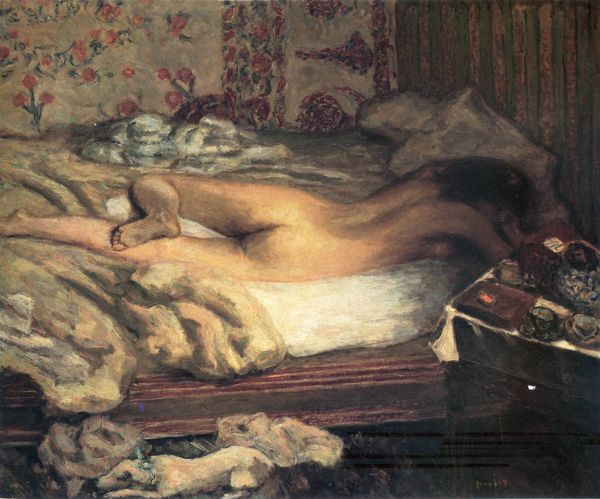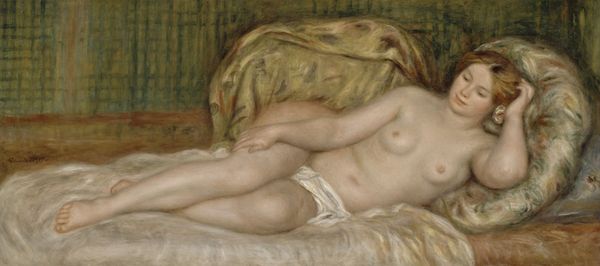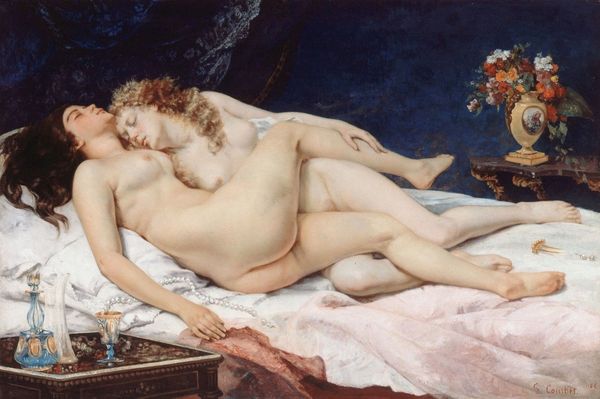
Dimensions: 85.5 x 146 cm
Copyright: Public domain
Curator: Agrasot’s 1872 oil painting, "Young Bacchus," certainly has a striking presence. My initial response is the textures and the relaxed pose— the contrast between the coarse ground and the smoothness of skin, rendered in loose brushstrokes that make the canvas almost palpable. Editor: Yes, a tangible contrast. Immediately, I think of classical archetypes versus Romantic naturalism; how does situating an almost hyper-masculine form against nature interact with perceptions of idealized power? The nudity, coupled with the vine crown, evokes classical ideals, specifically around privilege and leisure. But who benefits from these visual statements? Curator: The material aspects tell their own story, though. Agrasot chose oil paints, a readily available medium during this period, and utilizes a loose, almost impressionistic style which breaks from highly polished academic conventions, blurring lines between high and low artistic production of the time. I would even say that Agrasot subtly critiques this separation. Editor: Critiques, perhaps unintentionally reinforces. If we’re thinking of gender and power, the gaze directed at this young male form by audiences--then and now--has historical consequences that touch on cultural hegemony, reinforcing existing patriarchal social power structures under the guise of mere representation. What stories might a painter from a less empowered position at that time have told using these same artistic strategies? Curator: True, it begs the question about representation of subjects within their specific socio-economic and historical positions. However, consider how he handles the light— almost reflecting and highlighting texture, bringing what appears on the surface closer to tactile materiality; and this disrupts its own classical refinement! It's interesting to see how he wrestles with that in paint. Editor: And how fascinating it is to view artworks not only in light of an individual's intent, but through broader socio-political contexts. Thank you for drawing our attention to materiality and means here, where power structures intersect in visual and material ways. Curator: Thanks for sharing your take! Viewing art through both social lens and material production methods surely makes for a more inclusive and insightful look into historical narratives.
Comments
No comments
Be the first to comment and join the conversation on the ultimate creative platform.
